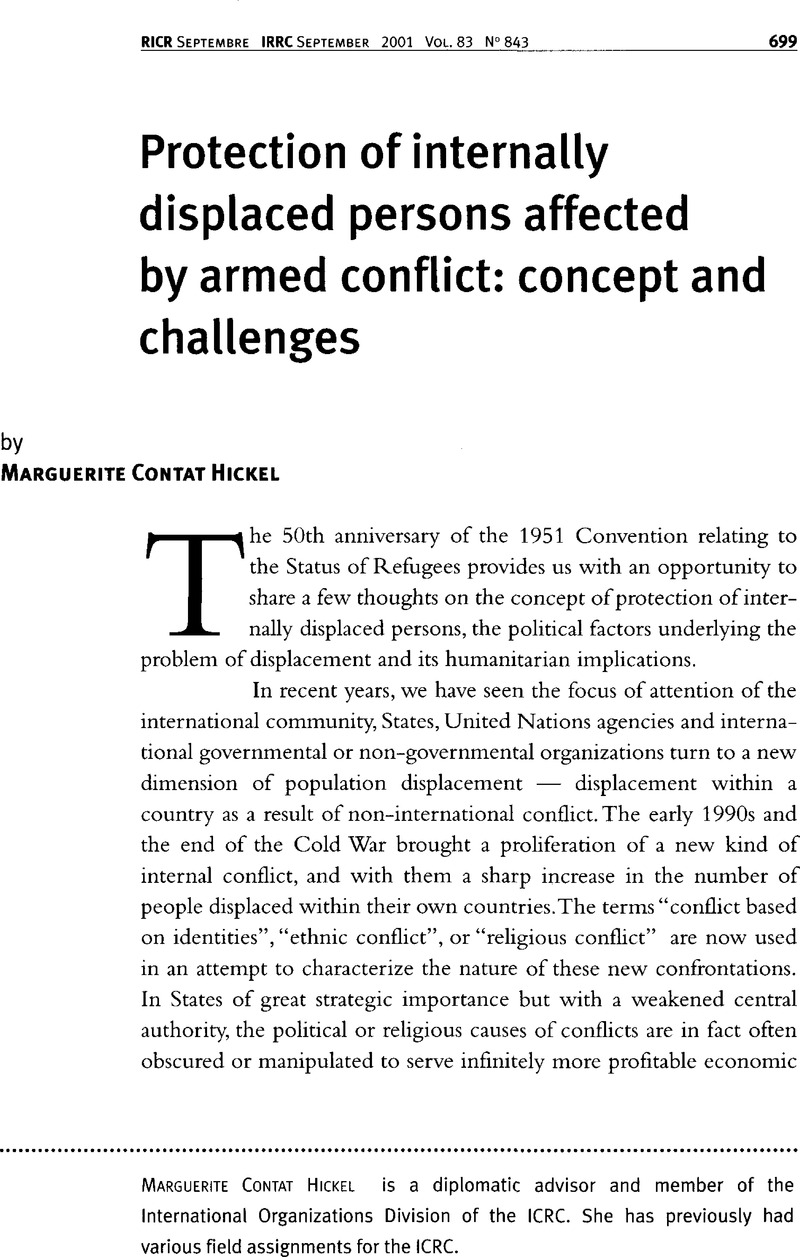Published online by Cambridge University Press: 19 April 2010

01 Third Workshop on Protection for Human Rights and Humanitarian Organizations: Doing Something about It and Doing It Well, 18–20 January 1999, Report, ICRC, Geneva, 1999. p. 21.
02 Fourth Workshop on Protection for Human Rights and Humanitarian Organizations: The Challenges of Complementarity, 16-18 February 2000, Report, ICRC, Geneva, 2000.
03 See also Paul Bonard, Modes of Action Used by Humanitarian Players: Criteria for Operational Complementarity, ICRC, Geneva, 1999.
04 As in Angola, where the ICRC is developing assistance programmes (water, food, seed distributions, etc.) for both the resident and the displaced population of the Huambo suburbs, or in Afghanistan, where it is helping the populations in situ so as to avert displacements.
05 Such as the return by boat from Monrovia to their home region in southeastern Liberia, organized at the beginning of 2001, of several hundred displaced persons who had fled the fighting ten years earlier and had been living since then in poverty in the Liberian capital. Or in Sri Lanka where, at the request of the security forces and the Liberation Tigers of Tamil Eelam (LTTE), the ICRC is facilitating the passage across the dividing lines for persons and food convoys for the civilian population.
06 Meinrad Studer, “The ICRC and civil-military relations in armed conflict”, IRRC, No. 842, June 2001, p. 367.
07 “Protection of internally displaced persons”, adopted in 1999 by the IASC and finalized in April 2000: “Plan of action for follow-up to the IASC policy on the protection of IDPs” and “Supplementary guidance to humanitarian/resident coordinators on their responsibilities in relation to internally displaced persons”.
08 See on this subject Jean-Philippe Lavoyer, “Guiding Principles on Internal Displacement: a few comments on the contribution of international humanitarian law”, IRRC, No. 324, September 1998, p. 467-480.
09 David A. Korn, Exodus within Borders. An Introduction to the Crisis of Internal Displacement, The Brookings Institution, Washington DC, 1998.
10 Global Humanitarian Assistance 2000, an independent report commissioned by the IASC, from Development Initiatives, May 2000.